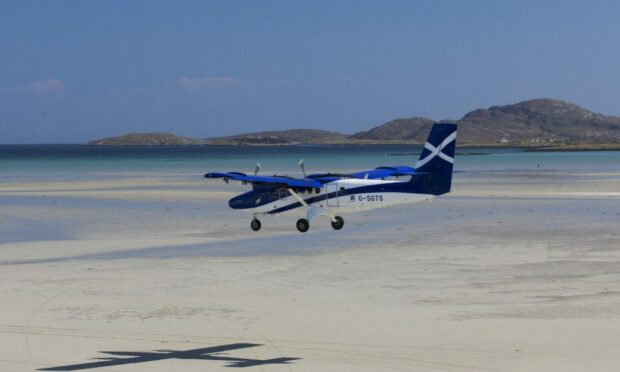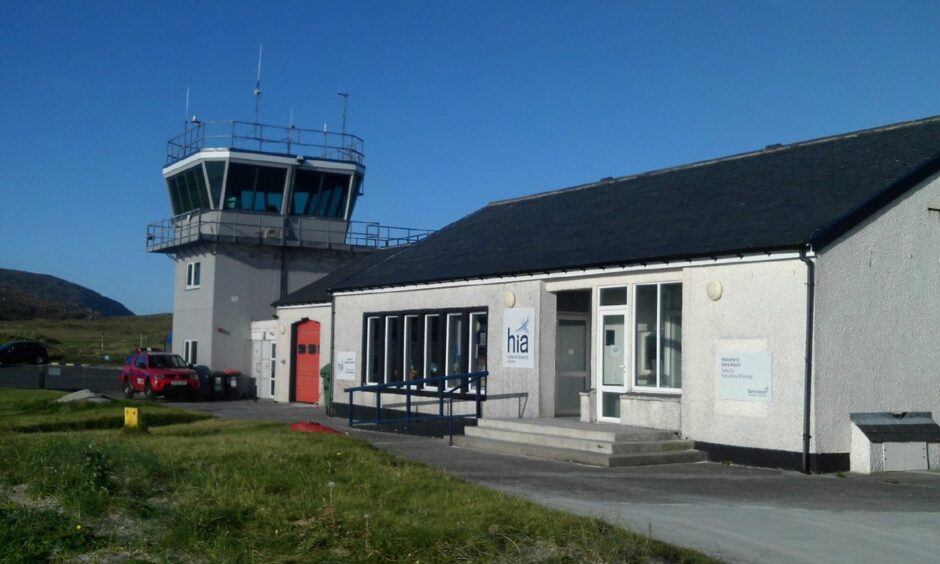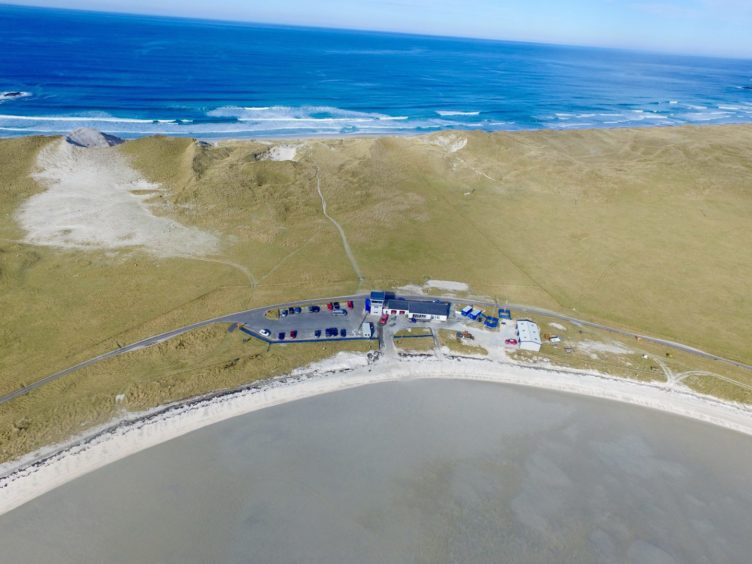Tiny Barra Airport, the only terminal in the world where scheduled flights land on a tidal beach, is in line for a £2 million makeover.
Its owner is aiming to create facilities worthy of the tourists who flock to the Outer Hebridean island to tick the experience off their ‘bucket lists,’ as well as residents that rely on it as a vital link to the mainland.
But Highland and Islands Airports (Hial) has no plans to replace its sandy runways, which can only be used when the tide is out, with a tarred one.
Prior to the Covid-19 pandemic, the number of passengers using the airport had been steadily climbing to an annual total of just under 15,000. The current terminal building was built for a capacity of around 7,000.
Hial chief executive, Inglis Lyon, said: “We are going to try and reconfigure the building and do a bit of development around it, probably at cost of about £2m.
We want to move it into being a visitor attraction, with lots of glass and lots of viewing opportunities.
“It’s a real iconic thing to land on the beach there.”
As well as tourists, the airport provides a lifeline link with the mainland for islanders, with twice daily flights to and from Glasgow, and is also used for medical emergencies.
Runways marked in the sand with wooden posts
The terminal sits on the edge of the wide, shallow bay of Traigh Mhor, or Big Beach in English, at the northern tip of Barra, which has a population of around 1,300.
It has three runways, set out in a triangle and marked with wooden posts which are submerged when the tide comes in.
Cockle pickers who use the beach and other visitors are asked to observe the windsock to check if the airport is in operation.
Mr Lyon has first-hand experience of “bucket listers” flying to Barra on one of the two small propeller-driven Twin Otter planes used on the route.
He said: “I was on the aircraft once and there was a mother and daughter from America who had travelled from London to Glasgow just to make the trip because it was on their bucket list.
We landed not long after the tide had gone out, so there was still a lot of water on the beach, and they got their feet wet walking up to the terminal.
“They went into the building, had a cup of coffee and a piece of carrot cake and then they were escorted by the pilot, who’d had exactly the same, back onto the aircraft to head back to Glasgow, then on to London, having ticked it off their list.
“We get a lot of visitors like that.”
Mr Lyon said that use of the beach runway was last reviewed 12-14 years ago, when the Twin Otters’ manufacturers stopped making them. But the firm was taken over and the new owners started producing the aircraft again.
Around five years ago, the Scottish Government, which owns Hial, instructed the organisation to buy two of the planes. They are leased to Loganair, which operates the route.
“They’ve probably got about another 25 years of life – so a long time to go yet,” Mr Lyon added.
Scheduled flights began on Barra beach in 1936, but the first to have touched down there is recorded as being on June 14, 1933, when ex-Royal Air Force pilot Jimmy Orrell landed a Midland & Scottish Air Ferries DH Dragon at Traigh Mhor.
Barra is one of 10 terminals operated in the Highlands and Islands by Hial, which also runs Dundee Airport.
The organisation’s board has agreed the Barra makeover in principle and the work is expected to be carried out in the 2023/24 financial year.


